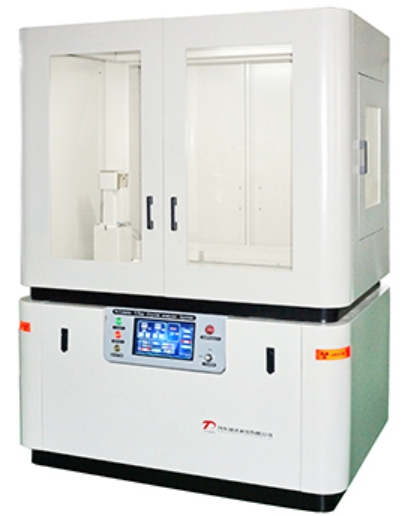
Open the door to innovation
2025-04-09 10:10Working Principle of X-Ray Crystal Analyzer
The operational foundation of the X-ray crystal analyzer lies in Bragg's law. According to this principle, when X-rays are directed onto a crystalline sample, diffraction occurs at specific angles, generating distinct diffraction spots or peaks. By precisely measuring the positions and intensities of these diffraction signals, it becomes possible to deduce the internal structure and composition of the crystal.
Key Components
X-Ray Source:
The system employs an X-ray tube as the radiation source, which includes a filament, a target material, and a high-voltage power supply.
X-Ray Tube Specifications:
Rated power: 2.4 kW
Focus size: Point focus (1 × 1 mm²) or line focus (1 × 10 mm²)
Available target materials: Cu, Co, Fe, Cr, Mo, W, among others
High-Voltage Generator (with imported PLC control):
Tube voltage range: 10–60 kV
Tube current range: 2–60 mA
Stability of tube voltage and current: ≤ ±0.005%
Rated output power: 3 kW
High-Voltage Cable:
Dielectric withstand voltage: ≥100 kV
Standard length: 2 m
Spectroscopic Crystal:
This component is essential for dispersing X-rays by wavelength, enabling spectral separation within the analyzer.
Detector:
X-Ray Crystal Analyzer captures X-rays scattered by the sample and converts them into electrical signals for subsequent data processing.
Goniometer:
A precision instrument for measuring diffraction angles, critical to ensuring analytical accuracy.
Control and Data Processing System:
Modern analyzers are equipped with computerized systems that automate operation control and facilitate data interpretation, streamlining the analytical workflow.
Product Characteristics
The TDF series X-Ray Crystal Analyzer features a vertically oriented tube sleeve that allows simultaneous use of four windows. It incorporates imported PLC control technology, which ensures high precision, strong anti-interference capability, and reliable system performance. The PLC manages high-voltage switching, lifting mechanisms, and includes an automatic X-ray tube training function, significantly prolonging the service life of both the tube and the instrument.
Application Areas
Materials Science: Investigates crystal structures, phase transitions, and defects, supporting the development of novel materials.
Chemistry: Applied in crystal chemistry and pharmaceutical chemistry for compound structural analysis and reaction mechanism studies.
Biology: Used in biomolecular structure analysis, drug design, and screening, contributing to the understanding of biological processes and disease mechanisms.
Environmental Science: Plays a vital role in catalyst development, nanomaterial characterization, and pollutant analysis.
Geology: Employed in mineral identification, rock genesis studies, geochronology, and related fields.
As a versatile and powerful analytical instrument, the X-ray crystal analyzer holds an irreplaceable position across numerous disciplines. With ongoing technological advancements and market development, its performance and application scope are expected to further expand.

